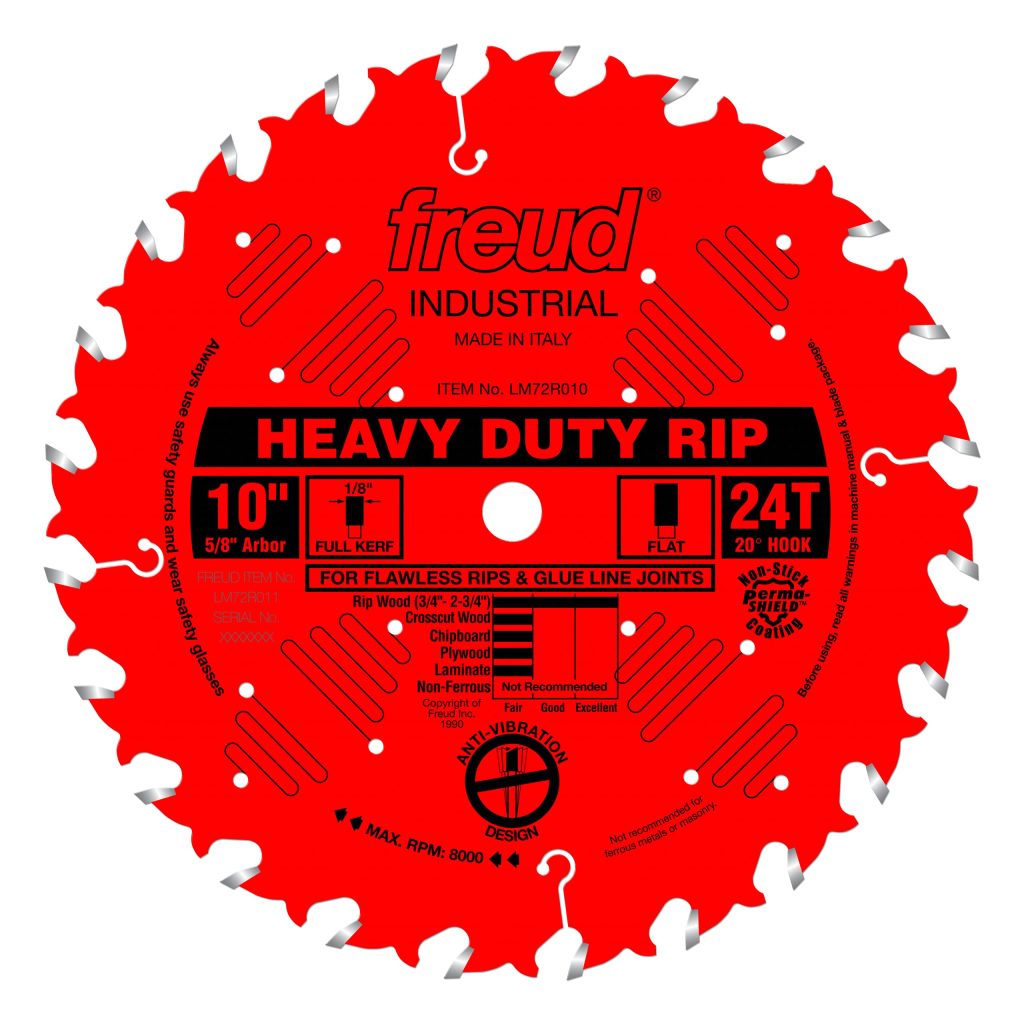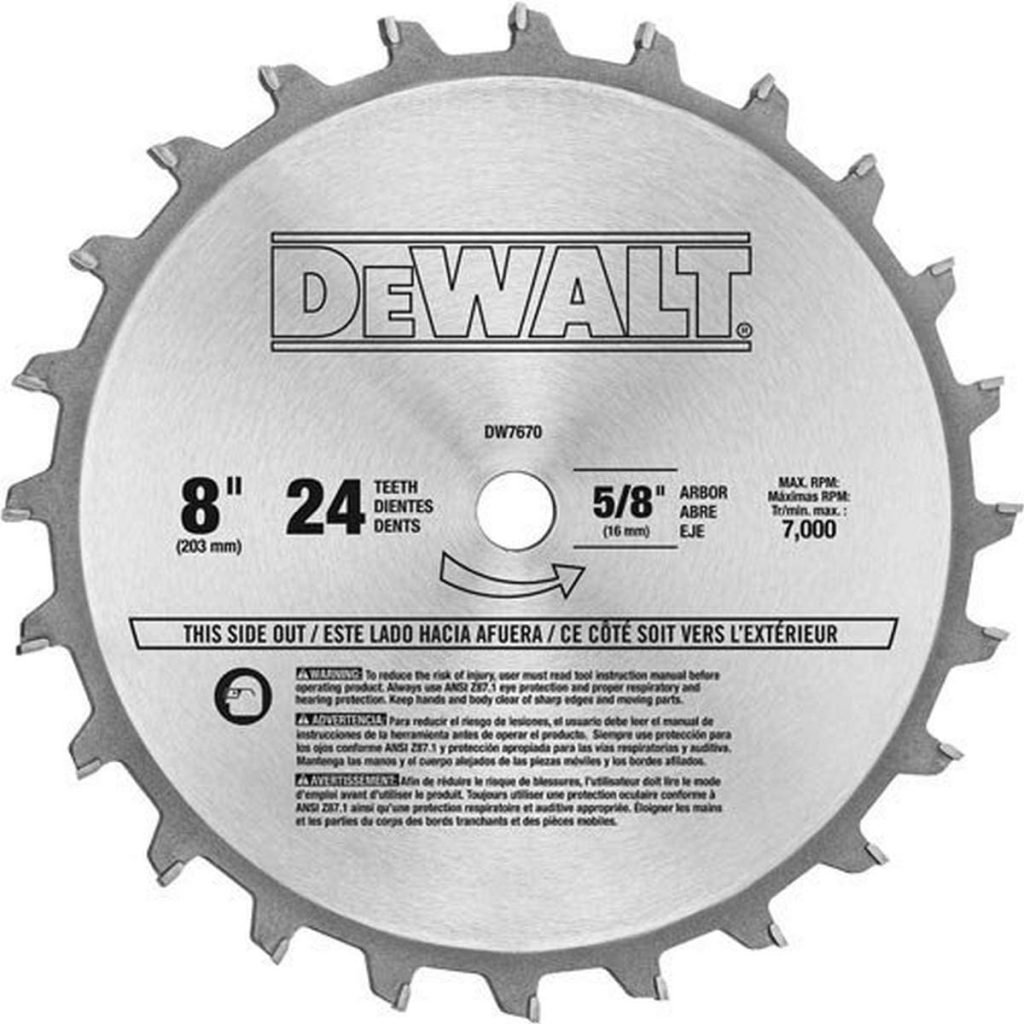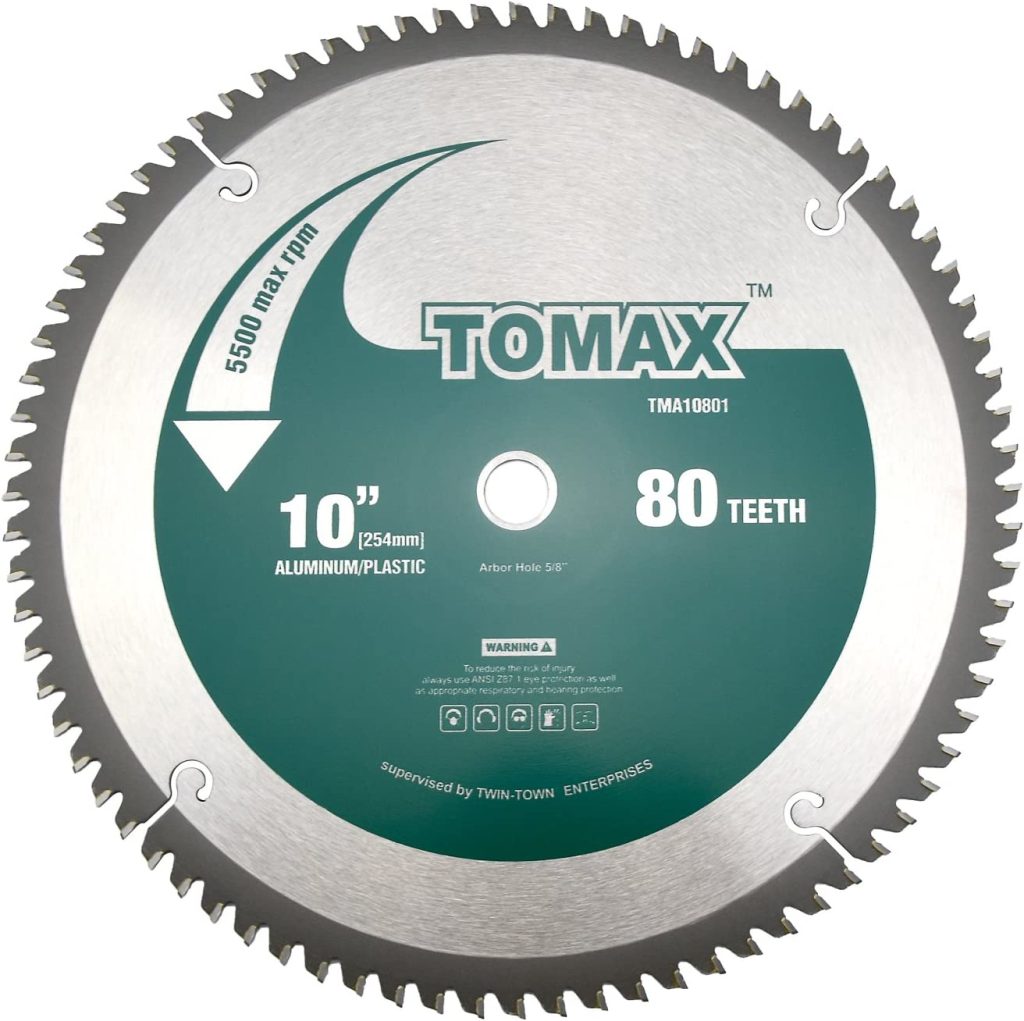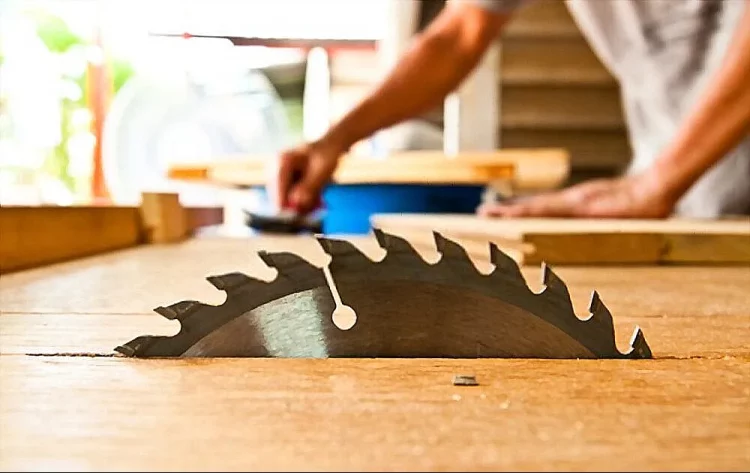A table saw is one of my favourite tools when it comes to doing any DIY woodwork. The most worthy part of a table saw is its blade, therefore, you must know everything about it before you start working on your project. There are different types of blades that you can use with a table saw. So for beginners, it can be a daunting task to choose the right type of table saw blade. Well, this guide is all about different types of table saw blades explained in detail.
Types of Table Saw Blades
There are several different types of table saw blades that are designed for specific tasks and materials. Some common types of table saw blades include:
Rip Blade

Ripping blades are designed for making rip cuts, or cuts that are made parallel to the grain of the wood. These blades typically have a lower tooth count, with teeth that are spaced farther apart. This allows the blade to remove material quickly and efficiently, making it well-suited for cutting long pieces of wood.
One of the key features of a ripping blade is its tooth geometry. The teeth are typically angled, with a steep hook angle that helps to grab and pull the material through the cut. The teeth are also typically ground with a flat top, which helps to reduce the amount of tear-out, or roughness, on the surface of the wood.
Ripping blades are typically made from high-speed steel or carbide, both of which are durable and resistant to wear. Some ripping blades also have a coating, such as a ceramic or diamond coating, which helps to improve their performance and extend their lifespan.
When using a ripping blade, it is important to use a fence to guide the material through the cut and to use proper pushing techniques to ensure a smooth and accurate cut. It is also important to use proper safety precautions, such as wearing eye protection and using a push stick or push block to keep your hands at a safe distance from the blade.
Crosscut Blade

Crosscut blades are designed for making crosscut cuts, or cuts that are made perpendicular to the grain of the wood. These blades typically have a higher tooth count, with teeth that are spaced closer together. This allows the blade to produce clean and accurate cuts, making it well-suited for cutting short pieces of wood or for making fine finish cuts.
In addition to having a higher tooth count, crosscut blades also tend to have teeth that are more evenly spaced and more finely honed. This helps to reduce the amount of vibration and chattering that can occur during the cutting process, which can produce a more accurate cut.
Overall, crosscut blades are an essential tool for any woodworker or carpenter, as they allow you to make precise, clean cuts when working with wood that has a complex grain structure.
Dado Blade

A dado blade is a type of circular saw blade that is used for making dadoes, which are square or rectangular channels cut into a piece of wood. Dadoes are often used for making joints in woodworking, such as for connecting shelves to a bookshelf or for creating a groove for a panel to fit into.
Dado blades typically have multiple teeth and are wider than regular circular saw blades, and they can be adjusted to different widths to create dadoes of different sizes. Dado blade sets can be used in table saws, radial arm saws, or other types of saws that are capable of making precise cuts.
Plywood Blade

Plywood blades are specialized saw blades that are designed specifically for cutting plywood. They are typically used in table saws and have teeth that are arranged in a way that helps to reduce splintering and chipping when cutting through the plywood.
They are typically made from high-quality materials such as carbide or high-speed steel, which helps to ensure that they are durable and long-lasting. Plywood blades are an important tool for anyone who works with plywood, as they can help to produce precise and accurate cuts, while also minimizing waste and damage to the material.
Non-Ferrous Metal Blade

Non-ferrous metal blades are blades made from metals that do not contain iron. Some examples of non-ferrous metals include aluminium, brass, and copper. These types of blades are sometimes used in woodworking for a variety of purposes, such as cutting and shaping wood, carving, and making decorative accents.
One advantage of using non-ferrous metal blades in woodworking is that they do not rust or corrode as steel blades can. This can be particularly useful in situations where the blade may come into contact with water or other corrosive substances. Non-ferrous metal blades are also generally softer and less brittle than steel blades, which can make them easier to work with and less prone to breaking or chipping.
However, non-ferrous metal blades are also generally less durable and less able to hold an edge compared to steel blades. They may also be more prone to bending or deforming under heavy loads. As a result, they may not be suitable for all types of woodworking applications and may require more frequent sharpening or replacement.

Meet Max, the founder and lead writer of our home improvement blog. He is a seasoned home renovation and design expert with over 8 years of experience in the industry.
Max has a passion for creating beautiful and functional living spaces and is dedicated to helping homeowners and DIY enthusiasts achieve their home improvement goals. He has worked on a wide range of projects, from small updates to full-scale renovations, and has a wealth of knowledge and experience to share.
As an avid DIYer, Max understands the challenges and rewards of tackling a home improvement project and enjoys sharing his tips, tricks and insights to make the process as easy and enjoyable as possible. In his free time, Max can be found working on his own home renovation projects, reading design blogs and magazines, and travelling to explore new design trends.
Max is excited to share his knowledge and experience with you and hopes to inspire and empower you to take on your next home improvement project with confidence. Follow Max on LinkedIn for more inspiration and expert advice.


